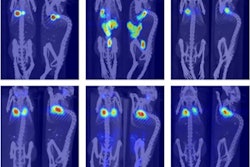
Researchers have shown for the first time that nitrogen oxides in air pollution appear to contribute to bone damage in women with osteoporosis, according to a study published February 15 in eClinicalMedicine.
A team of environmental health scientists led by Dr. Diddier Prada of Columbia University in New York, NY, found that bone mineral density measured by dual-energy x-ray absorptiometry (DEXA) decreased in women based on their exposure to nitrogen oxides over a period of five years.
"Improvements in air pollution exposure, particularly nitrogen oxides, will reduce bone damage in postmenopausal women, prevent bone fractures, and reduce the health cost burden associated with osteoporosis," Prada and colleagues wrote.
Osteoporosis heavily affects postmenopausal women and is known to be influenced by environmental exposures. Previous epidemiological studies on individual pollutants have suggested adverse effects on bone mineral density, osteoporosis risk, and fractures in older people, making the assessment of the impact of air pollutants and their mixtures on bone mineral density in postmenopausal women an urgent priority, according to the researchers. But no studies have been conducted specifically in postmenopausal women, they noted.
For this study, Prada's group gathered bone mineral density and long-term air pollution data on 9,041 women with osteoporosis who had participated in a national health screening initiative between October 1993 and December 1998. They analyzed associations between the women's bone mineral density and their exposure to air pollutants -- specifically PM10, nitric oxide (NO), nitrogen dioxide (NO2), and sulfur dioxide (SO2) -- averaged over one, three, and five years. Nitrogen oxides and SO2 are poisonous, highly reactive gases that form when fuel is burned at high temperatures by automobiles, trucks, and various nonroad vehicles.
The study found that mean PM10, NO, NO2, and SO2 averaged over one, three, and five years were negatively associated with DEXA whole-body, total hip, femoral neck, and lumbar spine bone mineral density measurements. Specifically, the highest correlations were observed between NO2 and NO for all periods. For example, lumbar spine bone mineral density decreased 0.026 grams/cm2/year per a 10% increase in three-year mean NO2 concentrations, the researchers reported.
"We show for the first time that from air pollution mixtures, nitrogen oxides contribute the most to bone damage and that the lumbar spine is one of the most susceptible sites," they wrote.
A study Prada's group conducted in 2017 found evidence connecting air pollution exposure to hospitalizations due to bone fractures in Medicare participants with osteoporosis.
While the current study did not examine associations between air pollution and fractures, these analyses are currently underway, the group noted.
"These findings highlight nitrogen oxides exposure as a leading contributor to bone loss in postmenopausal women, expanding previous findings of air pollution-related bone damage," the group concluded.




















